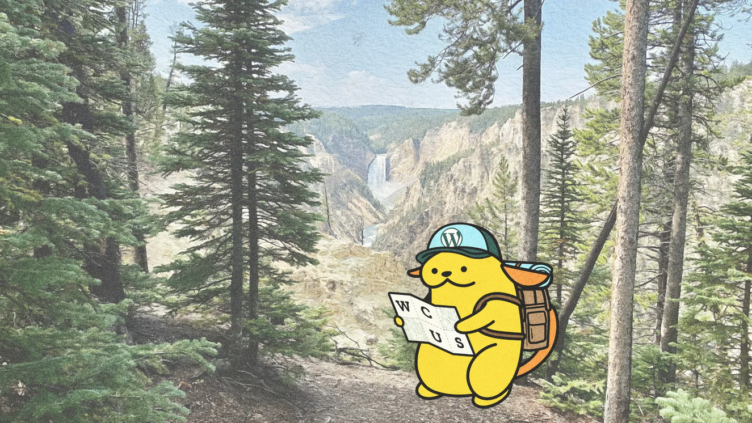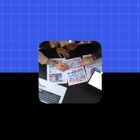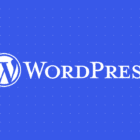Some highlights and an overview of WCUS 2021, from Courtney Robertson.
After deciding not to hold the event in 2020, WordCamp US 2021 returned for a single day on October 1st. The entire event was planned in eight weeks — which was not widely known until mentioned by lead organizer Jen Swifter during closing remarks. This marks the first WordCamp US without Matt Mullenweg’s “State of the Word,” although due to the event being virtual it’s presumed Matt will be holding the SotW as a separate virtual “event” closer to the end of the year — similar to last year.
The two track event still brought fresh content and had what could be argued as one of the most diverse speaker lineups for a single day at WordCamp US — at least when it comes to “new to WCUS” speakers. New faces — even on screens rather than a stage — are welcome to see.
The event sold over 3000 tickets, which for a WordCamp US and a virtual event with limited marketing time is quite good. Of course not everyone might have showed up but I could easily get the feeling that this was a large event from the activity in the online chat and from Twitter.
It is difficult to give highlights of the talks since I was part of the programming team that helped add these talks to the program. I decided not to watch pre-recorded presentations prior to the day of WordCamp US to make the experience as similar to a regular attendee’s experience as possible. For that reason, I couldn’t cover all the talks live, and there are still a few talks I need to go back and watch. But I can cover some highlights and point out some notable presentations.
Note: Until WCUS talks are published on WordPress.tv, you can use this guide to view them timestamped in the live stream on YouTube thanks to Marcus Burnette.
Bet Hannon’s talk on accessibility was well received by the audience at the start of the event. Bet noted that “25% of all adults in the US have a permanent or temporary disability,” so the subject material should apply to many site builders. Jill Binder came afterwards to give an inspirational story about her journey to being a diversity team leader for a team that in 2020 exists in 71 cities across 17 countries.
Meanwhile, Cory Webb and Rich Tabor delivered what could be caled the “introduction” and “showcase” talks related to the block editor. Most talks in this particular track had some connection to the block editor or the latest major enhancements in WordPress.
There were lightning talks after a very entertaining “musical break” — or what would be considered lunch for an in-person event. I wasn’t able to fully digest them all, but many of these performers featured rarely seen or new faces in the WordPress community:
Sienna Svob covered sustainability, recommending that WordPress designers use fewer resources when possible and lean on hosts that use renewable energy.
Lesley Sim of Newsletter Glue offered a no-slide presentation on how to make friends with early customers, and she reminded product builders to “create the expectation you’re helpful and easy to reach.” Lesley also reminded us that “anything you do for the first time [in business and marketing] is going to be awkward.”
If you are running an ecommerce site, Lax Mariappan’s talk is a good one to watch. In a similar vein, if you are running a community or are a WordCamp / Meetup organizer I would recommend Shusei Toda‘s talk on lessons learned from WordCamp Tokyo 2021.
Another presentation for designers and theme developers would be Tammie Lister’s “Let Themes Be Themes” talk which will likely find a special place in the heart of those yearning for inspiration as we head into the next-generation of WordPress themes with full site editing and the block editor.
For entertainment, Taco Verdonschot scored some points for using his own green screen in his talk on recharging your social batteries. This was a timely talk when many of us still work almost completely remotely via Zoom and Slack.
The second half of WordCamp US seemed to go by quickly. Two key talks about WordPress.org contributions were featured in one track. The first by members of the WordPress Training team focused on the Learn.WordPress.org resource. Support for Leearn will make a big impact in the coming days — we’ll do a deeper dive into this subject in the future — and I do agree that one day visiting a WordPress.org profile might be key part of the hiring process by companies looking for WordPress professionals.
The other key talk was given by AmyJune Hineline who covered how many ways you can contribute and reviewed all the available groups at make.wordpress.org.
Developers got a treat when Helen Hou-Sandi showed how the new White House site was built in six weeks with WordPress and over a dozen custom blocks.
“[10up] did 12 weeks work of hours in 6. Q&A as we went. People were trusted to Q&A their own work, no additional layers. We did have external help and always kept moving.”
While mostly inspirational, she did show off some React code and revealed the entire talk including the live coding was done in the browser (thanks in part to Github’s Codespaces). Another treat was seeing the experiments that Kjell Reigstad showcased in his talk about block styles.
Josepha Haden Chomphosy closed out the conference with a brief talk on “finding your own voice” with a fireside chat with Michelle Fran. Some tidbits:
- On acquisitions in the WordPress space: Josepha overall favors them and sees acquisitions as part of a maturing market ,but it’s not all about the money: “Sometimes companies being acquired need guidance. Large companies can provide advice and funds for the smaller company to get further. Mergers and acquisitions shouldn’t be looked at something that decreases the diversity in the ecosystem.”
- On diversity: “WordPress can be used by anybody ,so it should be able to be built by anybody.” However, Jospeha acknowledges that ventures similar to the all-womens release team (which took almost 2 years to plan) might not be happening anytime soon so it doesn’t turn into a “gimmick” and can be used more effectively to attract more diverse audiences to contribute.
- On individual vs. corporate contributions: “Always important to me in terms of volume, we aim for 2/3 contribution from individuals and 1/3 that are corporately sponsored,” although right now the numbers are closer to 50/50.
- On increasing openness and transparency: For decision making in WordPress and the posts on make.wordpress.org (including her updates), Josepha said: ““Even if people aren’t reading what goes into the decisions of WordPress, it’s just as important for people to go back and read that content than it is to read more traditional documentation.”
I’m biased, but I think overall the event was well done. Apart from Matt’s absence, it seemed to have a flavor of a WordCamp US throughout, complete with conversations happening on YouTube chat, Post Status Slack, and Twitter.





